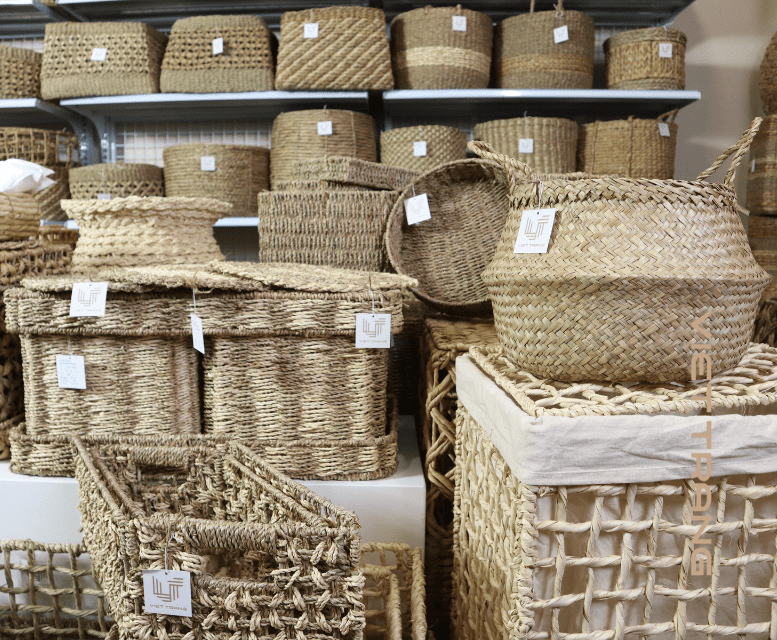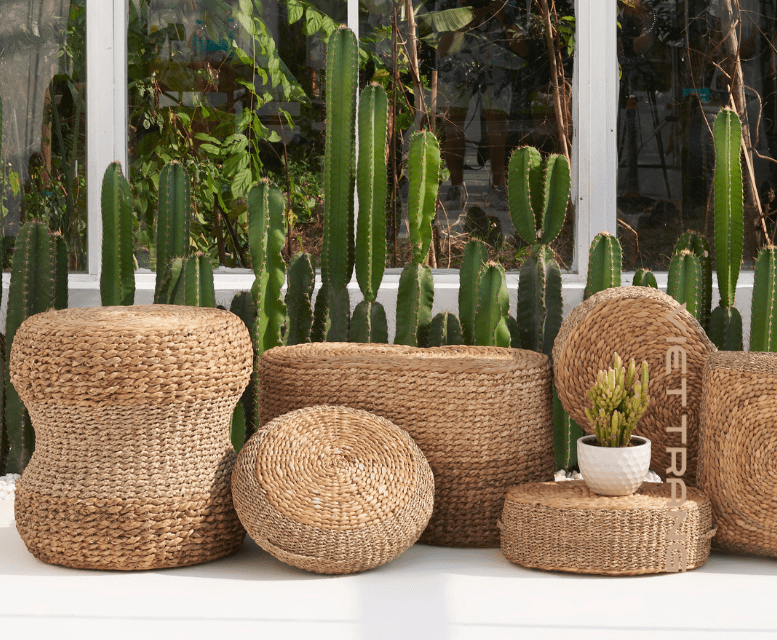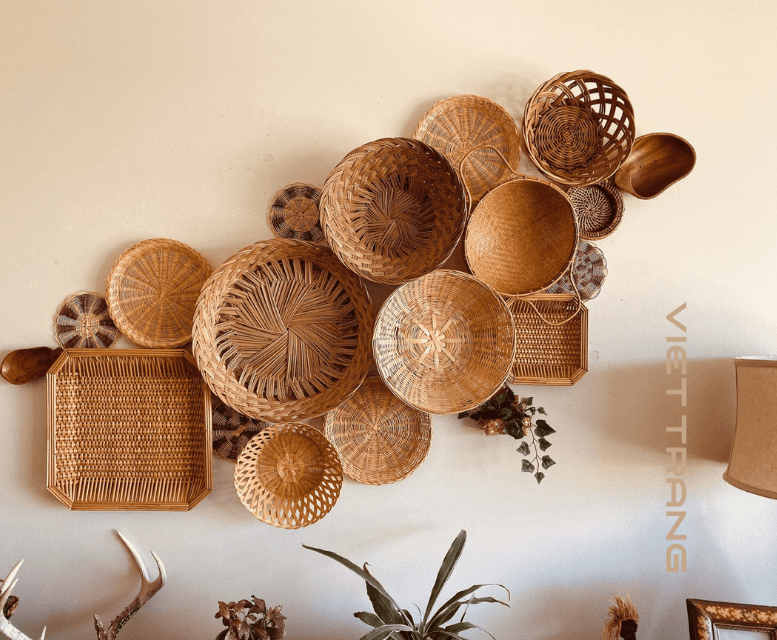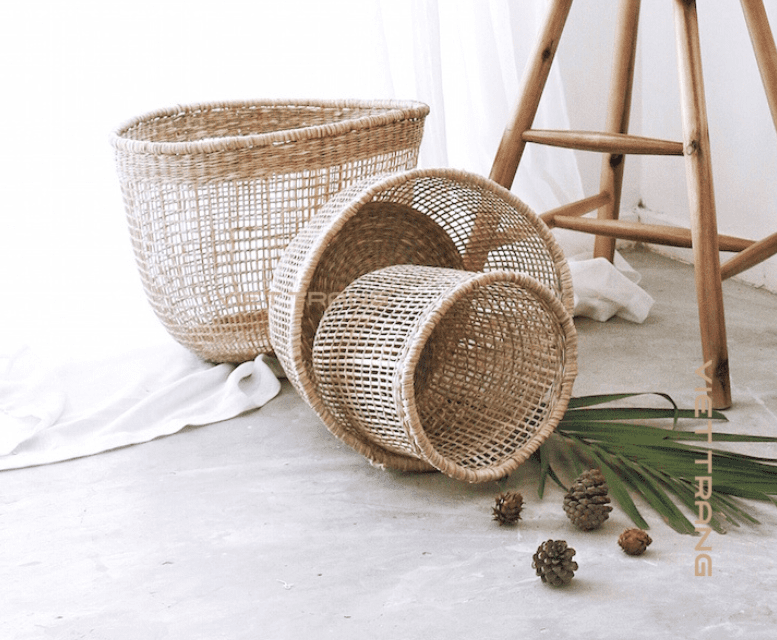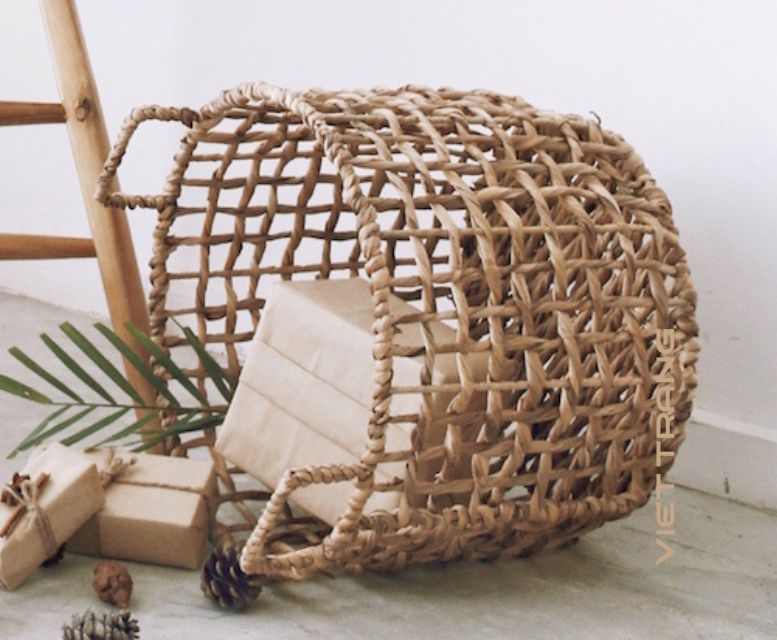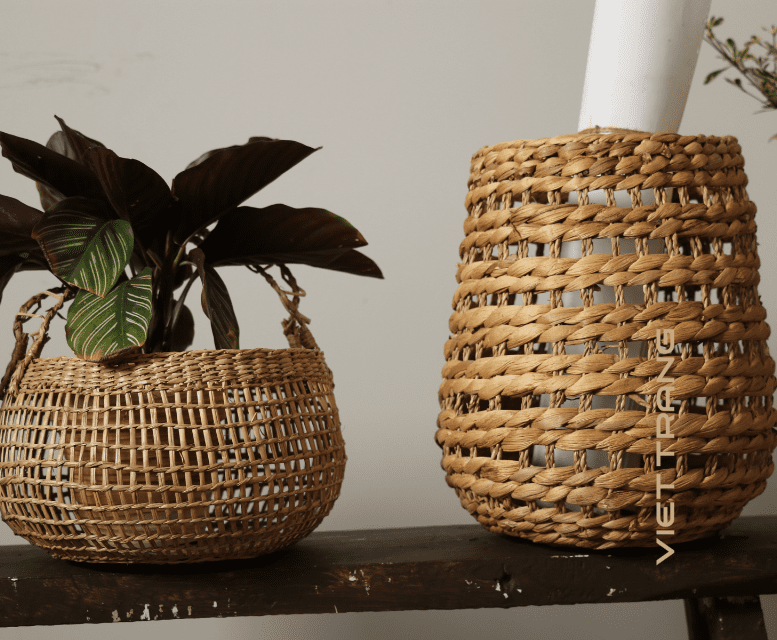2024 Home Decor Market Research and Key Insights
24 Jan 2024

As 2024 unfolds, we at Viet Trang Handicraft have conducted extensive home decor market research, all aimed at refining our business strategy for the year ahead. We’re eager to share these key findings and trends with you, hoping they’ll be just as valuable for your business planning.
In this post, we’ll delve into the long-term forecasts for the Home Decor Market. We’re talking about the trends shaping consumer behavior, the exciting opportunities on the horizon, and the challenges we might face. Plus, we’ll let you in on our thoughts about our approach for 2024.
How We Researched the Home Decor Market Insights
For our 2024 business planning, we dived into extensive desk research, selecting four reputable sources for their reliability and comprehensive coverage of the Home Decor Market. These include:
- Market Reports World – Global Home Decor Market
- Statista – Home Decor Market Overview
- IMARC Group – Home Decorative Materials Market
- Persistence Market Research – Home Decor Market Analysis
While these reports present varying data due to their unique research scopes, our focus was on understanding the broader market trends rather than exact figures. This approach helps us stay aligned with the evolving dynamics of the home decor industry, which encompasses home furniture, textiles, flooring, wall decor, lighting, and more.
Market Size and Growth: Consistent Growth
As we delve into various home decor market research reports for the home decor industry, a key observation emerges: despite differing methodologies and scopes, these reports unanimously point towards a trend of growth in the long run. This consistent pattern reflects the dynamic and evolving nature of the home decor market, highlighting several underlying trends driving this expansion.

- Market Reports World projects a growth from US$ 540,760 million in 2023 to US$ 622,770 million by 2029, indicating a CAGR of 2.4%. This forecast might be more conservative, possibly focusing on specific market segments or regions.
- Statista, on the other hand, estimates the global revenue in the Home Décor market segment to be around US$128.70 billion by 2024. This figure, while seemingly different, could be highlighting revenue from a particular segment or taking into account different economic indicators.
- IMARC Group offers a more optimistic outlook, with the global home decor market size expected to reach US$ 1,087.5 Billion by 2032, growing at a CAGR of 4.1% during 2024-2032. This broader growth rate might incorporate emerging trends and technologies influencing the market.
- Lastly, Persistence Market Research predicts the market to expand at a CAGR of 6.4%, growing from US$215.9 Billion in 2023 to US$333.4 Billion by 2030. This forecast could be accounting for rapid advancements and a wider adoption of eco-friendly and smart home decor products.
These diverse projections, while varying in numbers, consistently underline the home decor market’s robust growth trajectory. For us at Viet Trang Handicraft, understanding these variances helps us appreciate the broader market dynamics and trends more than just focusing on specific figures. It guides us in strategizing our approach to align with these evolving market trends.
Driving Forces Shaping the 2024 Home Decor Market
- Economic Prosperity and Disposable Income Growth:A significant driver is the increase in disposable incomes, particularly among younger demographics. This financial empowerment is leading to more spending on home decor, with a shift towards high-end and designer pieces that cater to a desire for unique and personalized living spaces.
- Sustainability and Eco-friendliness:There’s a growing consumer preference for sustainable and eco-friendly products. The awareness around environmental impact is steering choices towards items made from recycled, upcycled, or responsibly sourced materials. This trend is not just a fad but a reflection of a deeper societal shift towards environmental consciousness.
- Technological Integration and Smart Homes:The incorporation of technology into home decor items is revolutionizing interior design. From AI-driven personalization to AR for virtual home makeovers, technology is making home decor more interactive and customized. The rise of smart homes is also influencing decor choices, with a focus on tech-compatible aesthetics.
- The E-commerce Revolution:The shift towards online shopping has been dramatically accelerated by the e-commerce boom. This revolution has made a wide array of home decor products more accessible to a broader audience. E-commerce platforms are not just selling points but also sources of inspiration, where consumers discover the latest trends and ideas.Social media platforms have become significant trendsetters in home decor. Influencers, DIY bloggers, and design enthusiasts are shaping public opinion and consumer preferences through platforms like Instagram, Pinterest, and TikTok. These channels are not just for inspiration but also for direct marketing and sales.
Key Markets: A Global Perspective
While the United States and the European Union continue to be the mainstays of the market, there’s a noticeable shift in momentum towards Asia and Oceania. Besides, Each of these markets presents unique opportunities and challenges. For instance, in the US and European markets, staying ahead of design trends and incorporating sustainable practices can be crucial, while in Asia-Pacific and Australia, understanding cultural preferences and lifestyle needs is key.
- The United States: A Market of Innovation and Diversity
- The US home decor market is characterized by its diversity and constant innovation. With a strong economy and high consumer spending power, the US market is a hub for both traditional and modern home decor trends. The demand here is driven by a mix of classic aesthetics and a growing interest in smart home technologies and sustainable products.
- European Union: A Blend of Tradition and Modernity
- Europe’s rich history in design makes it a pivotal market for home decor. European consumers often favor a blend of traditional craftsmanship and contemporary design. There’s also an increasing focus on sustainability and eco-friendly products, reflecting the region’s commitment to environmental issues.
- Asia-Pacific: The Emerging Powerhouse
- The Asia-Pacific region, particularly East Asia, is emerging as a dominant force in the home decor market. This market is driven by rapid urbanization, an expanding middle class, and increasing disposable incomes. Trends here are often a fusion of traditional aesthetics with modern, minimalist designs.
- Australia: Outdoor Living and Eco-conscious Design
- In Australia, the focus is on outdoor living spaces and eco-conscious designs. Australian consumers tend to prefer products that align with their lifestyle, which often includes a strong connection to nature and the outdoors. Sustainability and functionality are key factors in their purchasing decisions.
Consumer Behaviour Trends: The most influential trends
As we navigate through 2024 home decor market research, three pivotal consumer behavior trends are significantly influencing the home decor market. Let’s delve into each:
- Sustainability and Eco-Friendliness:The trend towards sustainable and eco-friendly products is more pronounced than ever. Consumers are increasingly aware of their environmental footprint, leading them to choose home decor that is both aesthetically pleasing and environmentally responsible. This includes a preference for items made from recycled, upcycled, or sustainably sourced materials. Businesses that can demonstrate a genuine commitment to sustainability are likely to gain favor with environmentally conscious consumers.
- Personalization:Personalization is becoming a cornerstone of consumer preferences. Today’s consumers seek unique, customized home decor that reflects their personal style and story. This trend goes beyond mere customization options, encompassing products that allow for self-expression and individuality. Catering to this desire for personalization can create a deeper connection between your products and your customers.

- E-commerce, with a Focus on Social Commerce:The rise of e-commerce, particularly social commerce, is transforming how consumers shop for home decor. Platforms like Instagram, Pinterest, and TikTok are not just influencing consumer choices but are also becoming direct sales channels. Leveraging these platforms for both inspiration and transaction is becoming increasingly important. Businesses that can effectively utilize social media for marketing and sales are poised to capitalize on this growing trend.
Main Challenges
- Adapting to Post-COVID Market Dynamics:The aftermath of the COVID-19 pandemic continues to influence consumer behavior and market trends. Businesses must adapt to the changing needs and expectations of consumers, who now might prioritize functionality and comfort in their homes more than ever. Navigating this shift requires flexibility in business models and a keen understanding of evolving consumer preferences.
- Supply Chain Disruptions:Supply chain issues remain a critical challenge, partly due to ongoing global uncertainties and disruptions like those experienced in the Red Sea shipping routes. These challenges can lead to delays, increased costs, and inventory management issues. Businesses need to explore alternative supply chain strategies, such as diversifying suppliers or increasing local production, to mitigate these risks.
- Sustainability Pressures:With the growing consumer demand for sustainable and eco-friendly products, businesses face the challenge of ensuring that their products and processes are environmentally responsible. This includes sourcing materials sustainably, reducing waste, and minimizing the carbon footprint. Meeting these sustainability standards can be complex and resource-intensive.
Strategic Approaches to Overcome Market Challenges in Home Decor
In the face of the challenges outlined earlier, it’s crucial for businesses in the home decor industry to adopt strategic approaches that not only mitigate these challenges but also turn them into growth opportunities. Here are key strategies to consider:
- Emphasis on E-commerce in the Home Decor Market:The shift towards online shopping is more pronounced than ever in the home decor sector. This trend necessitates a strong e-commerce strategy that includes an intuitive online shopping experience, effective digital marketing, and leveraging social media platforms for customer engagement.
- Sustainability and Eco-Friendliness in Product Development:Consumer demand for sustainable and eco-friendly products is a significant trend that cannot be overlooked. This involves not only using sustainable materials but also adopting eco-friendly practices in production, packaging, and distribution. Developing products that are both aesthetically pleasing and environmentally responsible can create a strong brand identity and resonate with eco-conscious consumers. Transparency in sustainable practices and promoting this aspect in marketing efforts can further enhance customer trust and loyalty
- Adopting a Cautious Approach to Investments:While exploring new opportunities and innovations is essential, it’s equally important to adopt a measured approach to investments. In the current economic climate, where market trends can shift unexpectedly, it’s prudent to avoid overextending with large investments. Instead, the focus should be on ‘observing the market’—keeping an eye on emerging trends, consumer behaviors, and technological advancements before committing significant resources.
Conclusion: Balancing Caution and Opportunity in the Home Decor Market

As our home decor market research, it’s evident that while long-term growth is anticipated, the immediate road ahead presents its unique set of challenges. In an economic climate marked by consumer spending limits and geographical uncertainties like ongoing conflicts, a cautious approach is not just wise, but necessary.
At Viet Trang Handicraft, we recognize that this period, though challenging, is ripe with opportunities for those who navigate it thoughtfully. Our focus this year will be on optimizing our business model to adapt to these times. We are committed to continuing our journey with sustainable, eco-friendly products that resonate with our customers’ values and needs.
Our strategy involves a concerted effort to minimize operational costs while prioritizing crucial aspects like customer service. Strengthening relationships and partnerships with our customers remains at the heart of our approach. Concurrently, we plan to invest thoughtfully in exploring new markets, particularly through e-commerce and digital marketing. These channels not only offer a pathway to growth but also enable us to connect with a broader audience.
We hope the insights and strategies discussed in this blog post will serve as a source of inspiration and guidance in your own business journey. We are eager to hear your feedback, comments, or ideas on these market insights and our strategic direction. Let’s embrace this year as a time of learning, adapting, and growing together in the home decor industry.
Follow us on Linkedin and subscribe to our Newsletters to receive more updates!



